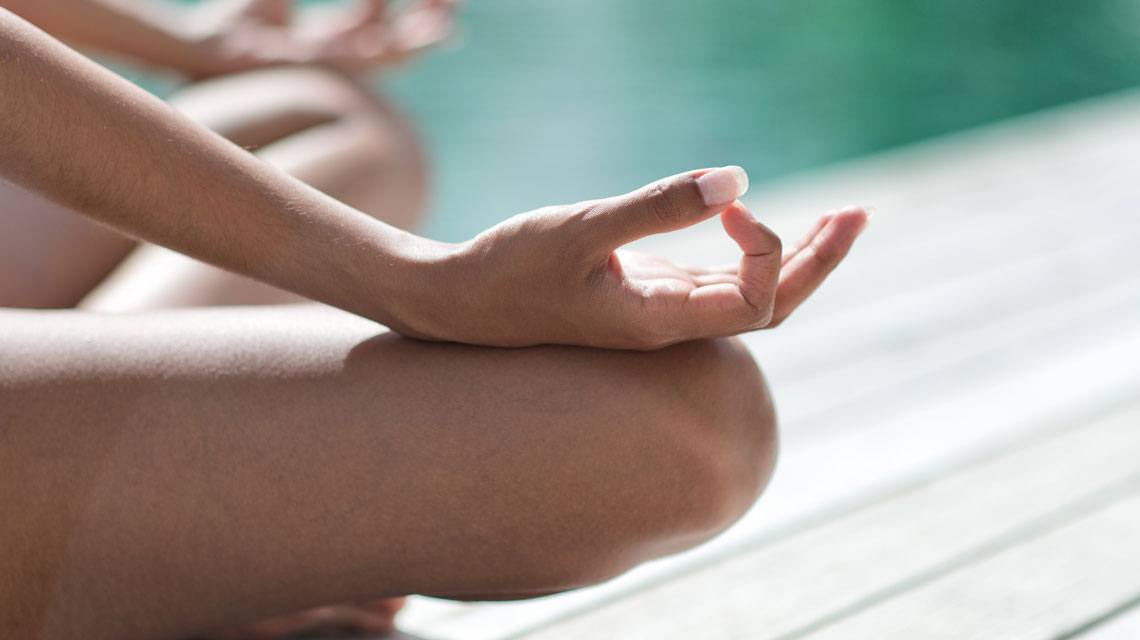
Here Comes
the Sun
Why vitamin D is our friend
April 4, 2017Why vitamin D is our friend
April 4, 2017“Here comes the sun (doo doo doo doo) / Here comes the sun, and I say / It’s all right “. The Beatles knew best. The sun is our friend, especially when it comes to soaking up health-promoting vitamin D. It not only benefits muscles and bones, but our overall mood.
Don’t underestimate the power of vitamin D. Indeed, it ranks high among its fellow nutrients. Our bodies produce it when we are exposed to sunlight. “During regular stays outdoors, the endogenous formation of vitamin D contributes to 80-90% of the vitamin D supply”, says Dr. Gisela Olias from the German Institute of Human Nutrition (DIfE). “The rest is supposed to be consumed by other sources like food. Sea fish, eggs and mushrooms are rich in vitamin D. However, if the body does not produce any vitamin D by itself an intake of 20 micrograms a day is recommended”, Dr. Olias continues. Even though it can be stored in the body, especially in the winter months, a diet rich in vitamin D can be helpful.
So why exactly do we need vitamin D? It is, in combination with parathormone and calcitonin, involved in the regulation process of the calcium and phosphate metabolism. “It’s important to build up calcium in our bones so that they stay strong and healthy. Vitamin D promotes the transport of calcium in the muscles as well as the protein biosynthesis”, explains Dr. Olias. “Ultimately, it directly improves our muscle strength.”
Furthermore, scientists from the University of Copenhagen discovered that vitamin D is needed to activate our immune defences to fight off infections. Without sufficient intake, the T-cells – white blood cells that support our body’s immune function – aren’t able to become active.
If vitamin D improves our vitality, what happens if our bodies lack it? “In the case of a vitamin D deficiency during infancy and childhood, the bones are insufficiently mineralised and therefore remain soft and can deform”, says Dr. Olias. “Our bone metabolism can also be negatively affected during adulthood. Demineralisation can cause the bones to get soft. This softening of the bones is called osteomalacia. Also, a lack of vitamin D can contribute to the development of osteoporosis, especially at an older age.”
As you can tell, a sufficient vitamin D intake highly contributes to our overall health. So how can we make sure to cover our daily demand? Even though some foods contain lots of vitamin D, a dietary intake only covers about 20% of the amount we need on a daily basis. So what to do? It’s pretty simple: We have to soak up some sun. But keep in mind that glass absorbs more or less all the UVB rays of the sunlight. Therefore, hiding inside behind a window doesn’t count. “Sunscreen also prevents the skin from building vitamin D. Even a sun protection factor as low as 8 prevents the production by over 97%“, Dr. Olias says. Of course, due to the increasing risk of skin cancer, sun protection is a must.
What about just hitting up a tanning bed you might ask? Unfortunately, it’s not that simple. Sure, it’s possible to increase the body’s own production of vitamin D with some indoor tanning. The artificial light is a combination of UVA and UVB rays, whereas the UVB is needed to support the vitamin D supply. But some studios use a higher rate of UVA rays, so there goes your vitamin D. Additionally, “regular visits to the tanning salon might be involved with a higher risk of skin cancer”, Dr. Olias knows.
Anyway, what’s better than working out while the sun is shining? Thankfully spring is just around the corner which means we have plenty of time to refill our vitamin D reserves while basking in the sun and exercising outdoors.
For everyone who wants to get an extra dose, here’s a list of foods that are rich in vitamin D:
- Fatty fish like salmon or mackerel
- Herring, fresh or pickled
- Eggs, especially egg yolk
- Cow’s or soy milk fortified with vitamin D
- Mushrooms
- Cheese
- Beef liver
Image by mimagephotography/Shutterstock


